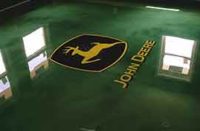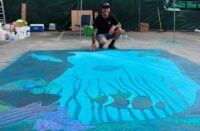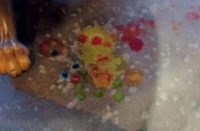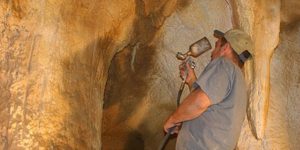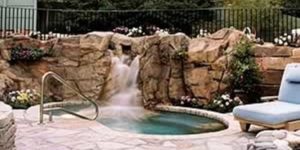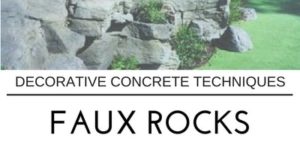
When stamping, California contractor Lee Levig likes to use more than one color as the base color. Usually different shades of the same color to create realistic stone effect.
“Let’s say I want to pour a 1,000-square-foot job that’s tan with a dark brown release. I’ll use 10 buckets of tan color hardener and three buckets of a different tan. I’ll broadcast the first color, and then I’ll take the other three tans and mottle those in here, kind of hit-and-miss technique. Now, we virtually have four colors down as the base,” he explains.
“Then, I’ll take a dark or opposing color, say terracotta, and apply it here and there for highlights. Next, I’ll throw something in there, like burgundy, that I won’t use a lot of, and I’ll blend it in. This gives me a few areas with ‘imperfections’ that make the floor look like a real stone and create realistic stone effect,” says Levig. “How many times do you break open a stone and only see one color? We’re trying to fool your audience by creating the best replication of stone that we can by using different shades of the same color in a project as seen here in a pool deck.
